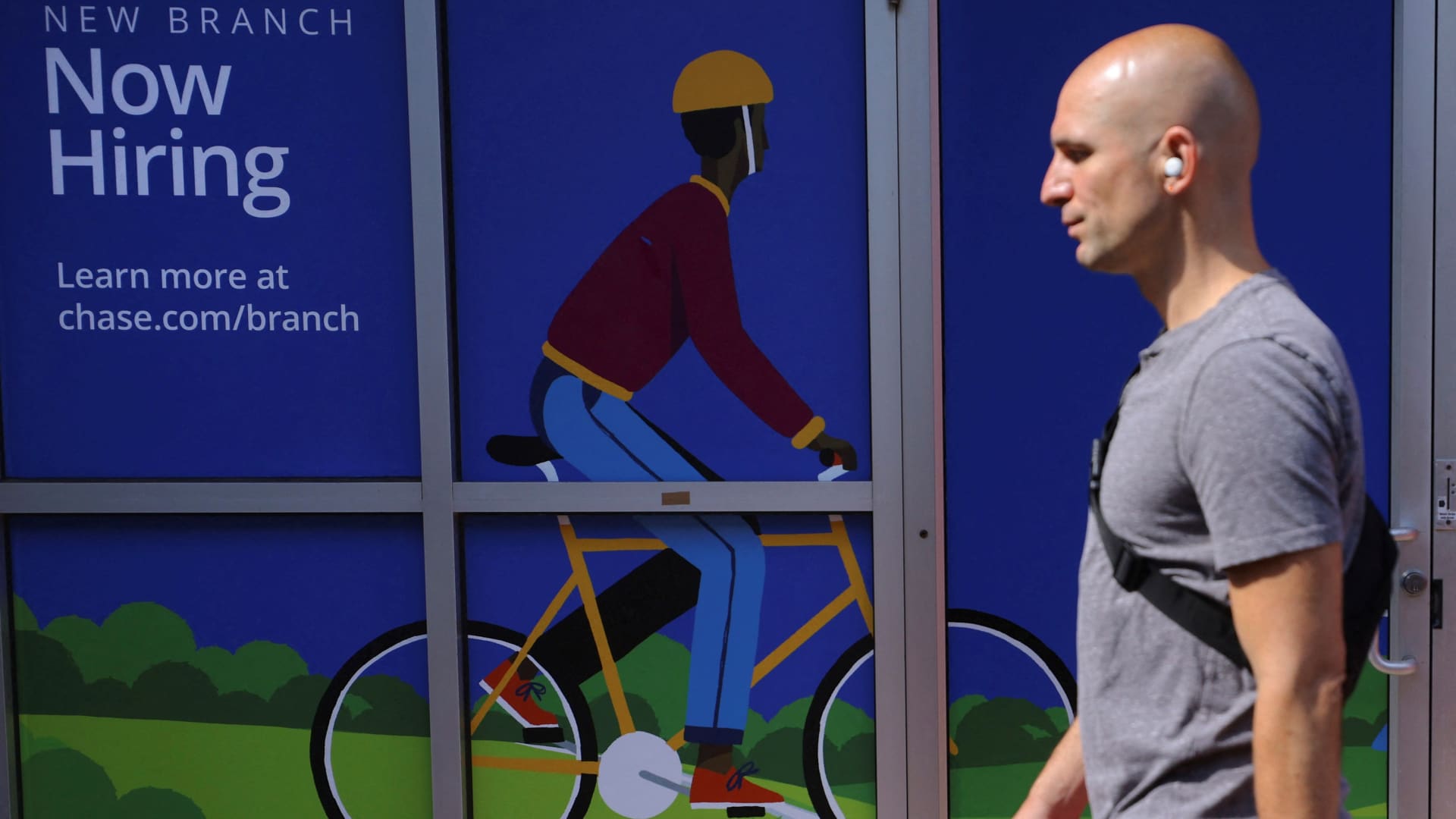Job creation topped expectations in February, but the unemployment rate moved higher and employment growth from the previous two months wasn’t near as hot as initially reported.
Nonfarm payrolls increased by 275,000 for the month while the jobless rate moved higher to 3.9%, the Labor Department reported Friday. Economists surveyed by Dow Jones had been looking for payroll growth of 198,000, a step slower from the downwardly revised gain of 229,000 in January.
The December gain also was revised down to 290,000 from 333,000, bringing the two-month total to 167,000 fewer jobs than initially reported.
The jobless level increased as the household survey, used to calculate the unemployment rate, showed a decline of 184,000 in those employed. The increase came even though the labor force participation rate held steady at 62.5%, though the “prime age” rate increased to 83.5%, up two-tenths of a percentage point. The survey of establishments shows the total number of jobs.
Average hourly earnings, watched closely as an inflation indicator, showed a slightly less than expected increase for the month and a deceleration from a year ago. Wages rose just 0.1% on the month, one-tenth of a percentage point below the estimate, and were up 4.3% from a year ago, down from the 4.5% gain in January and slightly below the 4.4% estimate.
Stocks rose Friday following the news, with the Dow Jones Industrial Average up nearly 150 points in early trading. Treasury yields moved lower; the benchmark 10-year note was last at 4.07%, down about 0.02 percentage points on the session.
“It’s got literally a data point for every view on their spectrum,” Liz Ann Sonders, chief investment strategist at Charles Schwab, said of the report. Those range from “the economy is plunging into a recession to Goldilocks, everything is fine, nothing to see here. It’s certainly mixed,” she added.
Job creation skewed toward part-time positions. Full-time jobs decreased by 187,000 while part-time employment rose by 51,000, according to the household survey. An alternative jobless measure, sometimes called the “real” unemployment rate, that includes discouraged workers and those holding part-time jobs for economic reasons rose slightly to 7.3%.
From a sector standpoint, health care led with 67,000 new jobs. Government again was a big contributor, with 52,000, while restaurants and bars added 42,000 and social assistance increased by 24,000. Other gainers included construction (23,000), transportation and warehousing (20,000) and retail (19,000).
The report comes with the markets on edge about the state of growth in the broader economy and the impact that might have on monetary policy. Futures trading moved slightly after the report, with traders now pricing in the greater certainty of an initial Federal Reserve interest rate cut in June.
“There’s no new thing under the sun between this report and last month’s report. It doesn’t really give us a whole lot of information, other than we can qualitatively say, we’re still growing jobs at a good pace and wages are still a little bit higher than we would like,” said Dan North, senior economist at Allianz Trade Americas.
North added that the report probably “doesn’t change the narrative” for the Fed, though he thinks the first cut may not happen until July.
In recent days, Fed officials have sent mixed signals, indicating that inflation is cooling but not by enough to warrant the first interest rate cuts since the early days of the Covid pandemic crisis.
Fed Chair Jerome Powell, speaking this week on Capitol Hill, described the labor market as “relatively tight” but moving into better balance from the days when job openings outnumbered available workers by a 2-to-1 margin.
Along with that, he said inflation “has eased notably” though still not showing enough progress back to the Fed’s 2% target. But on Thursday he told the Senate Banking Committee that the state of the economy has the Fed “not far” from when it could start easing up on monetary policy.
“We’ve got a data-dependent fed, which means we’re all at the mercy of the data,” Sonders said. “Big moves outside the range of consensus on labor market data, on inflation data can move the needle but in line or mixed numbers, then we all just jump to the next report.”
Job creation has stayed strong despite a spate of high-profile layoffs, particularly in the tech industry. Most recently, companies such as Cisco, Microsoft and SAP have announced substantial reductions in their workforces. Outplacement firm Challenger, Gray & Christmas said this was the worst February for layoff announcements since 2009, in the late days of the global financial crisis.
However, workers appear to still be able to find employment. Job openings were virtually unchanged in January at nearly 9 million and still outnumbered the unemployed by 1.4 to 1. Weekly jobless claims have moved little, at 217,000 in the most recent week of filings, though continuing claims did just pass 1.9 million, and the four-week moving average for that metric hit its highest level since December 2021.
Amid the conflicting signals, markets have pared back expectations for Fed rate cuts. Futures market traders are pricing in the first reduction coming in June, versus the expectation of March at the beginning of the year, and now figure on four total cuts this year against six or seven previously, according to CME Group data.


